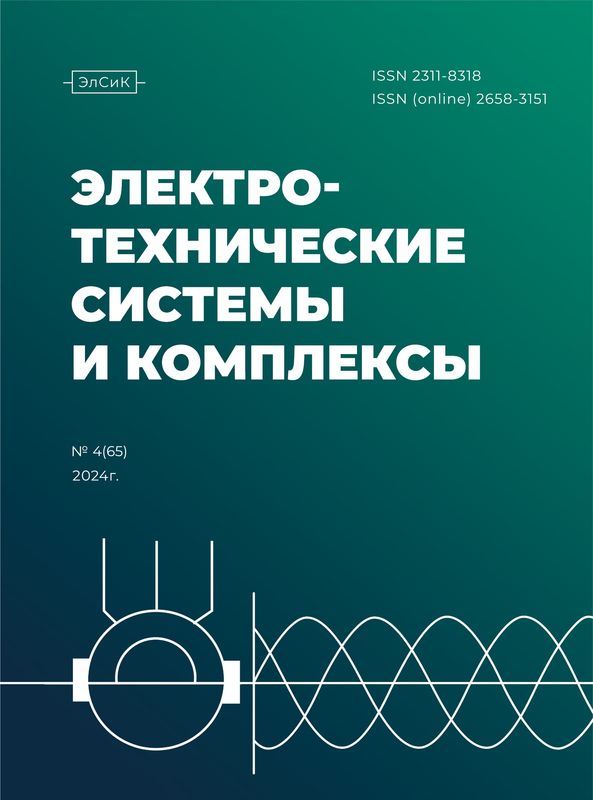Abstract
In the context of urban infrastructure development, increasing the energy efficiency of urban water supply systems is an important and urgent task that requires a comprehensive understanding of the aspects that determine production and energy modes. Optimization of electricity consumption at pumping stations becomes possible through accurate planning of water consumption in the presence of external disturbances. In this article, the main objective of the study was to identify socio-economic factors affecting water consumption and related energy costs of urban water supply systems. The methodological basis of the study was the analysis of variance (ANOVA) and the Tukey method for assessing the significance of differences between data groups, as well as density analysis of hourly water intake modes. The study used statistics from the water supply system of a city with a population of over half a million people for the period from 2017 to 2023. The results of the study showed that socio-economic factors, such as weekdays and seasonal fluctuations, have a significant impact on water consumption modes. Particular attention is paid to the Orthodox holiday of Maundy Thursday, which caused increased demand for water, increasing energy consumption by 11% as compared to normal days. Density analysis of the data made it possible to identify two main clusters of hourly water consumption corresponding to high and low system load modes. The histogram demonstrated a bimodal data structure, which was described using a four-component normal distribution. This allows for more accurate forecasting of peaks and troughs in water consumption, as well as the use of this data to optimize energy management of pumping stations, which contributes to an increase in the overall efficiency of the system.
Keywords
water supply system, energy consumption, socio-economic factors, analysis of variance, Tukey's method, density analysis, water consumption clusters, bimodal structure, pumping stations, energy efficiency
1. Heidari H., Arabi M., Warziniack T., Sharvelle S. Effects of urban development patterns on municipal water shortage. Frontiers in Water. 2021, vol. 3, 694817. doi: 10.3389/frwa.2021.694817
2. Ghatani S. Problems and Challenges on Urban Water Management in Darjeeling Hill Town. Asian Research Journal of Arts & Social Sciences. 2021, no. 13(2), pp. 24-33. doi: 10.9734/arjass/2021/v13i230209
3. Ren W., Bai X., Wang Y., Liang C., Huang S., Wang Z., Yang L. Analysis of Water Supply-Demand Based on Socioeconomic Efficiency. Journal of Sensors. 2022, vol. 2022, no. 1, 3438943. doi: 10.1155/2022/3438943
4. Sanchez G.M., Terando A., Smith J.W., Garcia A.M., Wagner C.R., Meentemeyer R.K. Forecasting water demand across a rapidly urbanizing region. Science of the Total Environment. 2020, vol. 730, 139050. doi: 10.1016/j.scitotenv.2020.139050
5. Dong C.L., Schoups G., Giesen N. Scenario development for water resource planning and management: a review. Technological Forecasting and Social Change. 2013, no. 80(4). pp. 749-761. doi: 10.1016/j.techfore.2012.09.015
6. Ocholla G., Letema S., Mireri C. Socioeconomic determinants of water delivery satisfaction in a medium sub-Saharan Africa city: A case of Kisumu, Kenya. Water Supply. 2022, no. 22(12), pp. 8682-8697. doi: 10.2166/ws.2022.388
7. Twomey K.M., Webber M.E. Evaluating the energy intensity of the US public water system. Energy Sustainability. 2011, no. 54165, pp. 1735-1748. doi: 10.1115/ES2011-54165
8. Bezerra B.G., Lee T.S. Crop evapotranspiration and water use efficiency. Irrigation Systems and Practices in Challenging Environments. Publisher: InTech, 2012, pp. 57-76. doi: 10.5772/29777
9. Zapata O. More water please, it's getting hot! The effect of climate on residential water demand. Water Economics and Policy. 2015, no. 1(3), 1550007. doi: 10.1142/S2382624X15500071
10. Macknick J., Newmark R., Heath G., Hallett K.C. Operational water consumption and withdrawal factors for electricity generating technologies: a review of existing literature. Environmental Research Letters. 2012, no. 7(4), 045802. doi: 10.1088/1748-9326/7/4/045802
11. Gruntovich N.V., Kapansky A.A., Fedorov O.V. The influence of factors on the formation of specific and total electricity consumption in the water supply system. Elektrotekhnicheskie sistemy i kompleksy [Electrotechnical Systems and Complexes], 2016, no. 3(32), pp. 54-59. doi: 10.18503/2311-8318-2016-3(32)-54-59 (In Russian)
12. Sthle L., Wold S. Analysis of variance (ANOVA). Chemometrics and Intelligent Laboratory Systems. 1989, no. 6(4), pp. 259-272. doi: 10.1016/0169-7439(89)80095-4
13. Nanda A., Mohapatra B.B., Mahapatra A.P.K. Multiple comparison test by Tukey’s honestly significant difference (HSD): Do the confident level control type I error. International Journal of Statistics and Applied Mathematics. 2021, no. 6(1), pp. 59-65. doi: 10.22271/maths.2021.v6.i1a.636
14. Abdi H., Williams L.J. Tukey’s honestly significant difference (HSD) test. Encyclopedia of Research Design. 2010. no. 3(1). pp. 1-5.
15. Ezechi C.G., Okoroafor E.R. Integration of Artificial Intelligence with Economical Analysis on the Development of Natural Gas in Nigeria; Focusing on Mitigating Gas Pipeline Leakages. SPE Nigeria Annual International Conference and Exhibition. SPE, 2023, pp. D031S018R004. doi: 10.2118/217163-MS
16. Liu W., Chen Z., Hu Y. Failure Pressure Prediction of Defective Pipeline Using Finite Element Method and Machine Learning Models. SPE Annual Technical Conference and Exhibition. SPE, 2022, pp. D021S022R001. doi: 10.2118/210406-MS
17. Fan X., Wang X., Zhang X., Yu X.B. Machine learning based water pipe failure prediction: The effects of engineering, geology, climate and socio-economic factors. Reliability Engineering & System Safety. 2022, vol. 219, pp. 108185. doi: 10.1016/j.ress.2021.108185
Kapanski A.A., Fedorov O.V. Socio-Economic Aspects of Energy Regimes Formation in Urban Water Supply. Elektrotekhnicheskie sistemy i kompleksy [Electrotechnical Systems and Complexes], 2024, no. 4(65), pp. 4-13. (In Russian). https://doi.org/10.18503/2311-8318-2024-4(65)-4-13










